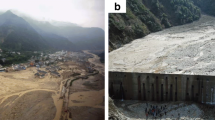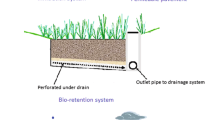Abstract
Flooding is now becoming one of the most frequent and widely distributed natural hazards, with significant losses to human lives and property around the world. Evacuation of pedestrians during flooding events is a crucial factor in flood risk management, in addition to saving people’s lives and increasing time for rescue. The key objective of this work is to propose a shortest evacuation path planning algorithm by considering the evacuable areas and human instability during floods. A shortest route optimization algorithm based on cellular automata is established while using diagonal distance calculation methods in heuristic search algorithms. The Morpeth flood event that occurred in 2008 in the UK is used as a case study, and a highly accurate and efficient 2D hydrodynamic model is adopted to discuss the flood characteristics in flood plains. Two flood hazard assessment approaches [i.e., empirical and mechanics-based and experimental calibrated (M&E)] are chosen to study human instability. A comprehensive analysis shows that extreme events are better identified with mechanics-based and experimental calibration methods than with an empirical method. The result of M&E is used as the initial condition for the Morpeth evacuation scenario. Evacuation path planning in Morpeth shows that this algorithm can realize shortest route planning with multiple starting points and ending points at the microscale. These findings are of significance for flood risk management and emergency evacuation research.

















Similar content being viewed by others
References
Abt SR, Wittier RJ, Taylor A, Love DJ (1989) Human stability in a high flood hazard zone. J Am Water Resour Assoc 25(4):881–890. https://doi.org/10.1111/j.1752-1688.1989.tb05404.x
Abebe YA, Ghorbani A, Nikolic I, Vojinovic Z, Sanchez A (2019) Flood risk management in Sint Maarten—A coupled agent-based and flood modelling method. J Environ Manag 248:109317. https://doi.org/10.1016/j.jenvman.2019.109317
Agency Environment (2005) Wansbeck and Blyth Catchment flood management plan. Bristol, UK
Anni AH, Cohen S, Praskievicz S (2020) Sensitivity of urban flood simulations to stormwater infrastructure and soil infiltration. J Hydrol 588:125028. https://doi.org/10.1016/j.jhydrol.2020.125028
Cox RJ, Shand TD, Blacka MJ (2010) Appropriate safety criteria for people in floods, WRL Research Report 240. Report for institution of engineers Australia, Australian rainfall and runoff guidelines: project 10. 22 p.
Centre for research on the epidemiology of disasters (CRED) and The united nations office for disaster risk reduction (UNISDR) (2015) The human cost of weather related disasters 1995–2015. https://www.preventionweb.net/files/46796_cop21weatherdisastersreport2015.pdf
Foster DN, Cox R (1973) Stability of children on roads used as floodways. Water Research Laboratory, The University of New South Wales, NSW, Australia, p 12
He M, Chen C, Zheng F, Chen Q, Lin Y (2021) An efficient dynamic route optimization for urban flooding evacuation based on cellular automata. Comput Environ Urban Sys 87(3):101622. https://doi.org/10.1016/j.compenvurbsys.2021.101622
Hou J, Li G, Li G, Liang Q, Zhi Z (2018) Application of efficient high-resolution hydrodynamic model to simulations of flood propagation. J Hydroelectr Eng 37(2):96–107. https://doi.org/10.11660/slfdxb.20180210
Hou J, Liang Q, Zhang H, Hinkelmann R (2015) An efficient unstructured MUSCL scheme for solving the 2D shallow water equations. Environ Model Softw 66:131–152. https://doi.org/10.1016/j.envsoft.2014.12.007
Hu F, Yang S, Hu X, Wang W (2017) Integrated optimization for shelter service area demarcation and evacuation route planning by a ripple-spreading algorithm. Int J Disaster Risk Reduct 24:539–548. https://doi.org/10.1016/j.ijdrr.2017.06.006
Jonkman SN, Penning-Rowsell E (2008) Human instability in flood flows. J Am Water Resour Assoc 44:1208–1218. https://doi.org/10.1111/j.1752-1688.2008.00217.x
Jonkman SN, Kelman I (2005) An analysis of the causes and circumstances of flood disaster deaths. Disasters 29(1):75–97. https://doi.org/10.1111/j.0361-3666.2005.00275.x
Karvonen R, Hepojoki H, Huhta H, Louhio A (2000) The use of physical models in dam-break flood analysis, development of rescue actions based on dam-break flood analysis (RESCDAM). Final report of Helsinki University of Technology, Finnish Environment Institute
Kvocka D, Falconer R, Bray M (2016) Flood hazard assessment for extreme flood events. Nat Hazards 84(3):1569–1599. https://doi.org/10.1007/s11069-016-2501-z
Lee HK, Hong WH, Lee YH (2019) Experimental study on the influence of water depth on the evacuation speed of elderly people in flood conditions. Int J Disaster Risk Reduct 29:101198. https://doi.org/10.1016/j.ijdrr.2019.101198
Love DJ (1987) Analysis of a high hazard flood zone. Technical report, prepared for City of Boulder Public Works Department, Boulder, Colo
Marchi L, Borga M, Preciso E, Gaume E (2010) Characterisation of selected extreme flash floods in Europe and implications for flood risk management. J Hydrol 394:118–133. https://doi.org/10.1016/j.jhydrol.2010.07.017
Mazzoleni M, Cortes Arevalo VJ, Wehn U, Alfonso L, Norbiato D, Monego M, Ferri M, Solomatine DP (2017) Towards assimilation of crowdsourced observations for different levels of citizen engagement: the flood event of 2013 in the Bacchiglione catchment. Hydrol Earth Sys Sci Discuss. https://doi.org/10.5194/hess-2017-59
Merz B, Kreibich H, Schwarze R, Thieken A (2010) Review article “Assessment of economic flood damage.” Nat Hazard 10:1697–1724. https://doi.org/10.5194/nhess-10-1697-2010
Milanesi L, Pilotti M, Ranzi R (2015) A conceptual model of people’s vulnerability to floods. Water Resour Res 51:182–197. https://doi.org/10.1002/2014WR016172
Musolino G, Ahmadian R, Xia J, Falconer RA (2020) Mapping the danger to life in flash flood events adopting a mechanics based methodology and planning evacuation routes. J Flood Risk Manag. https://doi.org/10.1111/jfr3.12627
Parkin G (2010) The september 2008 morpeth flood: information gathering for dynamic flood reconstruction. Dissertation, Newcastle University
Queensland Commission for Children, Young People, and Child Guardian (CCYPCG) (2012) https://www.fire.qld.gov.au/communitysafety/swiftwater/default.asp. Accessed 11 Aug 2012
Ramsbottom D, Floyd P, Penning-Rowsell E (2003) Flood risks to people: phase 1. R&D technical report FD2317. department for the environment, food and rural affairs (DEFRA), UK Environment Agency.
Ramsbottom D, Wade S, Bain V, Hassan M, Penning-Rowsell E, WIlson T, Floyd P (2006) Flood risk to people: phase 2. R&D technical report FD. department for the environment, food and rural affairs (DEFRA), UK Environment Agency.
Shu CW, Han SS, Kong WN, Dong BL (2016) Mechanism of toppling instability of the human body in floodwaters. IOP Conference Series: Earth and Environmental Science. IOP Publishing 012038. https://doi.org/10.1088/1755-1315/39/1/012038
Swiss Re (2018) Preliminary sigma estimates for 2018: global insured losses of USD 79 billion are fourth highest on sigma records. https://www.swissre.com/media/news-releases/nr_20181218_sigma_estimates_for_2018.html
Teng J, Jakeman AJ, Vaze J, Croke BF, Dutta D, Kim S (2017) Flood inundation modelling: a review of methods, recent advances and uncertainty analysis. Environ Model Software 90:201–216. https://doi.org/10.1016/j.envsoft.2017.01.006
United nations office for disaster risk reduction (UNDRR) (2015) sendai framework for disaster risk reduction 2015–2030. https://www.preventionweb.net/files/43291_sendaiframeworkfordrren.pdf
United Nations framework convention on climate change (UNFCCC) (2013) Decision 2/CP.19 Warsaw. https://unfccc.int/sites/default/files/resource/docs/2013/cop19/eng/10a01.pdf
WEF (2017) The global risks report 2017, 12th edn. World economic forum, Geneva
WEF (2018) The global risks report 2018, 13th edn. World economic forum, Geneva
WEF (2019) The global risks report 2019, 14th edn. World economic forum, Geneva
Xia J, Falconer RA, Wang Y, Xiao X (2014a) New criterion for the stability of a human body in floodwaters. J Hydraul Res 52:93–104. https://doi.org/10.1080/00221686.2013.875073
Xia J, Falconer R, Guo P, Gu A (2014b) Stability criterion for a flooded human body under various ground slopes. CUNY, Academic Works
Zhang W, Zhou J, Liu Y, Chen X, Wang C (2016) Emergency evacuation planning against dike-break flood: a GIS-based DSS for flood detention basin of Jingjiang in central china. Nat Hazards 81(2):1283–1301. https://doi.org/10.1007/s11069-015-2134-7
Zheng Y, Li XG, Jia B, Jiang R (2019) Simulation of pedestrians’ evacuation dynamics with underground flood spreading based on cellular automaton. Simul Model Pract Theory 94:149–161. https://doi.org/10.1016/j.simpat.2019.03.001
Zhuo L, Han D (2020) Agent-based modelling and flood risk management: a compendious literature review. Journal of Hydrology 591:125600. https://doi.org/10.1016/j.jhydrol.2020.125600
Acknowledgements
This work is partly supported by the National Natural Science Foundation of China (Grant No. 52079106, 52009104), the Sino-German Mobility Programme (Grant No. M-0427).
Author information
Authors and Affiliations
Corresponding author
Ethics declarations
Conflict of Interest
The authors declare that they have no known competing financial interests or personal relationships that could have appeared to influence the work reported in this paper.
Availability of data and material
The data that support the findings of this study are available from the corresponding author upon reasonable request.
Additional information
Publisher's Note
Springer Nature remains neutral with regard to jurisdictional claims in published maps and institutional affiliations.
Rights and permissions
About this article
Cite this article
Li, B., Hou, J., Ma, Y. et al. A coupled high-resolution hydrodynamic and cellular automata-based evacuation route planning model for pedestrians in flooding scenarios. Nat Hazards 110, 607–628 (2022). https://doi.org/10.1007/s11069-021-04960-x
Received:
Accepted:
Published:
Issue Date:
DOI: https://doi.org/10.1007/s11069-021-04960-x




